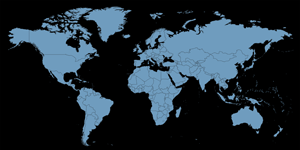Global Issues


Nigeria
• Source, transit, and destination country for women and children subjected to forced labor and sex trafficking.
• Trafficked Nigerian women and children are recruited from rural, and to a lesser extent urban areas for domestic servitude and sex trafficking.
• Nigerian women and children taken from Nigeria to other West and Central African countries, including Gabon, Cameroon, Ghana, Chad, Benin, Togo, Niger, Burkina Faso, the Central African Republic, and The Gambia, as well as South Africa for domestic servitude and sex trafficking.
• Nigerian women in forced prostitution in Mali and Cote d’Ivoire.
• Nigerian women and girls, primarily from Benin City in Edo State, taken to Italy for forced prostitution.
• Others are taken to Spain, the Netherlands, Germany, Turkey, Belgium, Denmark, France, Sweden, Switzerland, Norway, Ireland, Greece, and Russia for the same purposes.
• Nigerian women and children transported to North Africa and the Middle East, including Saudi Arabia, the United Arab Emirates, Lebanon, Egypt, Libya, and Morocco and held captive in the sex trade.
• May 2010 – the Open Society Justice Initiative released a report highlighting problem of police raping of arrested prostitutes.
• 17.5% of women in Nigeria report intimate partner physical violence in their lifetime.
• 3.9% of women report sexual intimate partner violence in their lifetime.
• 27.7% of women report intimate partner and/or non-partner physical violence in their lifetime.
• 7% of women report intimate partner and/or non-partner sexual violence in their lifetime.
• 5.1% reported abuse during pregnancy.
• The rape of women in detention by police was a problem.
Advocacy:
• Project Alert on Violence Against Women operated a shelter for victims of domestic violence, which offered services such as counseling, legal aid, and acquisition of skills.
• Women’s Rights Advancement and Protection Alternative also served as a leading voice in the campaign against violence against women and continuously advocated passage of legislation to protect women’s rights.
Sources: UN Women Violence against Women Prevalence Data: Surveys by Country 2011; U.S. Department of State 2010 Human Rights Report, U.S. Department of State Trafficking in Persons Report 2011
